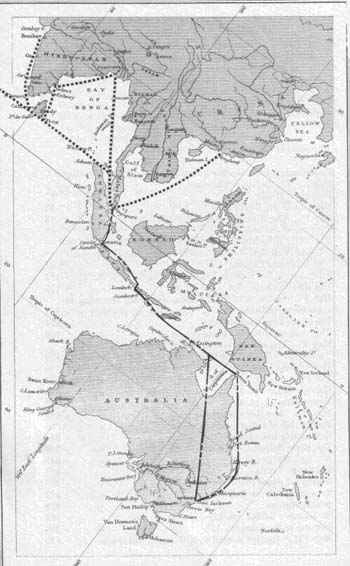Countermapping: New South Wales and Southeast Asia
Main Article Content
Abstract
In the course of the last fifteen years there has been a heightened awareness of the power of maps (e.g., Harley 2001, Monmonier 1991, Wood 1992). Recent critical cartography has addressed itself to the question of how reality is distorted by the two dimension nature of maps. There has been increasing attention to which interests in society are spoken for by maps, in asking who gets left off maps and way they are left off. This emergent critical tradition in geography has been paralleled by a growing assertiveness on the part of many minority and marginalised groups in today’s world. These groups appear to realise that disempowerment has a great deal to do with visibility and that their own relative invisibility relates quite directly to the kind of hypervisibility achieved by those with power. We only have to look at the history of colonialism to observe how the technology of mapping has been employed for purposes of domination and territorial dispossession. What is perhaps novel today, though, is that mapping technology has become increasingly available to the dispossessed and that they are actively availing themselves of it.
Article Details
Issue
Section
References
Brown, Steve (in press 2008-02-01) 'Landscaping heritage: toward an operational cultural landscape approach', Australian Historical Archaeology 15.
Byrne, Denis (In press) 'Counter-mapping in the archaeological landscape', in B. David and J. Thomas (eds), Handbook of Landscape Archaeology. World Archaeology Congress.
Byrne, Denis (2003) 'Nervous landscapes: race and space in Australia', Journal of Social Archaeology 3(2): 169-193. https://doi.org/10.1177/1469605303003002003
Byrne, Denis and Maria Nugent (2004) Mapping Attachment: A Spatial Approach to Aboriginal Post-contact Heritage. Sydney: Department of Environment and Conservation (NSW).
Campbell, Ben (2005) 'Changing protection policies and ethnographies of environmental engagement', Conservation and Society 3(2): 280-322.
Craig, William J., Trevor M. Harris & Daniel Weiner (2002) Community Participation and Geographic Information Systems. London & New York: Taylor & Francis.
Goodall, Heather (2006) 'Indigenous peoples, colonialism, and memories of environmental injustice'. In S. H. Hood, P.C. Rosier and H. Goodall (eds.), Echoes from the Poisoned Well: Global Memories of Environmental Injustice, pp. 73-95. Oxford: Lexington.
Harley, J.B. (2001) The New Nature of Maps: Essays in the History of Cartography. Baltimore: Johns Hopkins University.
Harris, Laila and Mark Harrower (2006) 'Introduction: critical interventions and lingering concerns', ACME: An International E-Journal for Critical Geographies 4(1): 1-10.
Harrison, Rodney (2004) Shared Landscapes: Archaeologies of Attachment and the Pastoral Industry in New South Wales. Department of Environment and Conservation (NSW) and University of NSW Press.
IUCN (1994) Guidelines for Protected Area Management Categories. Gland, Switzerland and Cambridge, UK: IUCN).
McWilliam, A. (2006) Fataluku forest tenures in the Conis Santana National Park in East Timor. In T. Reuter (ed.) Carving the Earth, Sharing the Land: Perspectives on Land Tenure in the Austronesian World. Canberra: ANU EPress.
Monmonier, Mark (1991) How to Lie with Maps. Chicago: University of Chicago Press.
Peluso, N.L. (1992) Rich Forests, Poor People: Resource control and resistance in Java. Berkeley: University of California Press. https://doi.org/10.1525/california/9780520073777.001.0001
Peluso, N.L. (1995) 'Whose woods are these? Counter-mapping forest territories in Kalimantan, Indonesia', Antipode 27(4): 383-406. https://doi.org/10.1111/j.1467-8330.1995.tb00286.x
Peluso, N.L. (2003) 'Fruit trees and family trees in an anthropogenic forest: forest zones, resource access, and environmental change in Indonesia', in Charles Zerner (ed.), Culture and the Question of Rights, pp.184-218. Durham: Duke University Press. https://doi.org/10.1215/9780822383819-006
Rambali, Giacomo & Jasmin Callosa-Tarr (2002) Participatory 3-Dimensional Modelling: Guiding Principles and Applications. Los Banos, Philippines: ASEAN Pegional Centre for Biodiversity Conservation.
Roseman, Marina (2003) 'Singers of the landscape: song, history, and property rights in the Malaysian rainforest', in Charles Zerner (ed.), Culture and the Question of Rights, pp.111-141. Durham: Duke University Press. https://doi.org/10.1215/9780822383819-004
Sowerwine, Jennifer C. (2004) 'Territorialisation and the politics of highland landscapes in Vietnam: negotiating property relations in policy, meaning and practice', Conservation & Society 2(1): 97-136.
Thongchai, Winichakul (1994) Siam Mapped: A History of the Geo-body of a Nation. Honolulu: University of Hawaii Press.
Tsing, Anna Lowenhaupt (1993) In the Realm of the Diamond Queen. Princeton: Princeton University Press.
Tsing, Anna Lowenhaupt (2003) 'Cultivating the wild: honey-hunting and forest management in Southeast Kalimantan', in Charles Zerner (ed.), Culture and the Question of Rights, pp. 24-55. Durham: Duke University Press. https://doi.org/10.1215/9780822383819-002
Wood, Denis (1992) The Power of Maps. New York: The Guildford Press.
